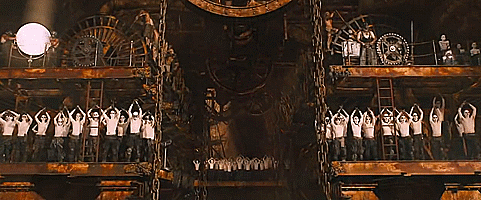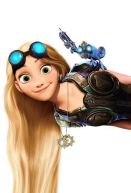Steampunk stories are becoming popular. More writers than ever are creating for this genre. So what does steampunk have to offer to the writer looking to set their story in this genre or the reader looking tp steampunk as something a bit different?
What is steampunk?
Everyone knows Steampunk is an aesthetic: a look, a feel, a fashion style, a way of dressing something up. But hidden beneath the Victorian clothing, genteel manners, gunslinger weaponry, cogs, and steam, are attitudes that provide a rich resource for story creation.
It’s perhaps helpful to think of the steampunk as a “skin” or a style rather than a genre of its own, that can be applied, as an overcoat, to a variety of other genres. This means that steampunk is not limited to any one genre and can happily be used as a device to cross or mix genres.
The late Jay Lake has this to say about writing steampunk:
“The main thing to keep in mind when plotting a steampunk story is that a sense of fun, often bordering on sheer, walleyed weirdness, is one of your best keys to the subgenre. Steampunk was born to be an over-the-top form. The characters might be wry, understated persons of mordant wit and significant accomplishment, but if you give them a story that carries the reader along in a flood of action, you will fulfill the promise of steampunk.”
Steampunk in three words
I agree. For me, steampunk can be summed up in three words: fun, fun, fun. Of course, you can weave in serious elements to make your reader stop and think—I hope my own steampunk novels, Gaia’s Brood and Coggler’s Brood have something serious to say about human nature—but above all steampunk should be fun.
In this blog I will show you how to extract the essential story components from the steampunk aesthetic and explain how you can use them to ‘punk up’ your story.
Steampunk: Victorian Nostalgia
One of the key elements driving steampunk is the nostalgia for a technology that was accessible to any competent, educated pair of hands with the right tools and a suitable workshop. The Victorian era is often seen as the last period in history where a well-educated man or woman could have a grasp on nearly all human knowledge.
It is no coincidence that Steampunk parties like it’s 1898, rather than 1845 or 1820. In 1898 steam was definitely king: the industrial revolution was in full swing on both sides of the Atlantic. The British empire was confident in its right to rule a quarter of the globe. The young nation of America was expanding fast into the wild west. It was an age of invention, exploration, scientific discovery, and adventure.
Steampunk sees the Victorian era as an age of confidence and hope on both sides of the Atlantic. A time before the horrors of machine-driven world-war or mutually assured nuclear annihilation; a time before the world became self-destructive. A time of hope in the future.
Actually, for most people it was probably none of these. We just see it that way, because we’re looking back from the future to what we imagine was a simpler more innocent time.
Steampunk is Victoriana with modern liberal sensibilities
Steampunk is Victoriana with modern liberal sensibilities, without the true Victorian restrictions and prejudices (free-thinking, emancipated heroines were never a part of the real Victorian era anywhere in the world).
In reality, the Victorian world was as messy, complicated, and destructive as the modern-day, maybe more so. As Dickens reminds us, the majority of the population were embroiled in huge extremes of crippling poverty. For most, the industrial revolution was an endless cycle of deprivation, grinding work, human misery, high infant mortality, and early death. Only the rich ruling classes felt otherwise. These extremes provide fertile comparisons that make interesting and absorbing stories.
Examining comparisons between steampunk and it’s close relative Dieselpunk can draw out some of the key elements of this style.
Fury Road, not Steampunk, but Dieselpunk
In her article “Mad Max: Fury Road is not steampunk—it’s dieselpunk”, Aja Romano describes the difference, as she perceives it, between Steampunk and Diesel punk.
“Generally speaking, steampunk focuses on the aesthetic of the mid-late 19th century. It imagines that the technology of the age advanced into the future, but the aesthetic and cultural markers stayed more or less the same.

The core of the steampunk concept is that the world of the future still runs on steam power: steam-powered ships, airships, vehicles, and trains. It’s a sustainable resource, and it gives the steampunk universe the freedom to experiment with alternate technologies (or magical ones, if you’re into that). The steampunk world is an expansive world, growing and exciting, full of cogs and clocks and light and electricity.
Dieselpunk, on the other hand, fixates on the early 20th century, particularly the 1920s–1940s. Dieselpunk society is powered entirely by diesel. In the dieselpunk world, technology may yield power, but it comes at a cost.
Steampunk is about a world waiting to happen. Dieselpunk is about a world that’s about to self-destruct. Tweet this!
In dieselpunk, the energy of pre-war art deco and its emergent technology comes head to head with the weary cynicism of a world made bleak by World War II. Dieselpunk emphasizes war and weaponry where steampunk emphasizes peace and technological invention. Dieselpunk is gritty and grimy where steampunk is clean. Dieselpunk emphasizes artillery, steel, and iron. In essence, steampunk is gold and brass; dieselpunk is silver and chrome. A dieselpunk society is one in a state of depletion.

Steampunk is about a world waiting to happen. Dieselpunk is about a world that’s about to self-destruct.
That’s the crucial difference, and that’s why Mad Max: Fury Road deserves to be known for what it is—an important, subversive dieselpunk film.”
A world waiting to happen
Whilst I am not sure if I agree with such a stark distinction between steampunk and dieselpunk, I do love how Aja’s describes steampunk as, “a world waiting to happen…an expansive world, growing and exciting…” This may not be everyone’s interpretation of steampunk, but it certainly chimes with me and what I am trying to express in my dystopian steampunk stories, Gaia’s Brood and Coggler’s Brood.
On the strength of Aja’s full article, “Mad Max: Fury Road’ is not steampunk—it’s dieselpunk,” I went out and bought a copy of Fury Road to watch. The article is well worth the read if you want to understand the difference between the Steampunk and Dieselpunk story tropes. And let’s be honest, what we are really talking about here are story tropes—conventions, aesthetics, stereotypical characters, settings, and clichés that define the type of story (genre) we are presenting.
An escape from the stresses of a high-tech world
Steampunk is, in some respects, an escape from the high-tech world of today. One of the key elements driving steampunk is the nostalgia for a technology that was accessible to any competent, educated pair of hands with the right tools and a suitable workshop. The Victorian era is often seen as the last period in history where a well-educated man or woman could have a grasp on nearly all human knowledge.
‘Kick the door down and keep going’ punkishness
Whether these steampunk reimagines of the Victorian world are credible, or not, is irrelevant. We are story spinners: invention, exploration, scientific discovery, adventure, and hope for the future, mixed with a certain ‘kick the door down and keep going’ punkishness (I love that phrase), these are the mind-sets that drive steampunk; these are the attitudes that make steampunk fun for both writers, readers, and viewers. And for most people, in the modern world, these elements are largely absent from their daily lives. If you writer or read for entertainment or to escape the stresses of daily life—to escape into a fantasy world—then steampunk could be for you.

Boil steampunk (excuse the pun) down to it’s essential elements and it is basically a set of dressed up attitudes and formularized story tropes.
Some writers like to feed these attitudes back into an historical Victorian setting for their steampunk sci-fi stories or into a wild-west setting. But the great thing about attitudes is this: they are transportable. So just like Fury Road, steampunk attitudes can be transposed into any setting, any time (in case of my books, a dystopian future), or any genre.
Before you dismiss steampunk as just another geeky trend, there is one other element to the success of steampunk that I must mention: It works well on both sides of the Atlantic.
Steampunk’s commercial success
By a happy coincidence, the same attitudes and technology driving the British Empire and much of Europe during the Victorian era, was also driving the expansion of America into the West. So whether you dress up your heroine as a genteel British lady or a rooting-tooting swearing gun-slinger from the Weird West is largely irrelevant. What does matter, for commercial success, is that steampunk attitude and story tropes, work well in both the American and UK markets and is becoming more popular.
Okay, so let’s get to the nitty-gritty: taking any old adventure story and dressing your characters up in goggles, top hats, and cogs won’t actually cut it.
Whilst the aesthetic is important, a steampunk novel is more than just dressing up characters or have them speak in flowery Victorian style dialogue. Both these cheap techniques give steampunk a bad name.
Taking any old adventure story and dressing your characters up in goggles, top hats, and cogs isn’t steampunk. Tweet this!
To create a truly steampunk story, you must endow your characters with steampunk attitudes: invention, exploration, scientific discovery, adventure, and hope for the future, all mixed with a certain ‘kick the door down and keep going’ punkishness—(the film Sucker Punch is a good example—although that is actually a diesel punk film).
It’s All About Attitude
If steampunk is about a certain punkish attitude, then your characters are where these attitudes should reside.
By all means dress up your setting with cogs and steam, and your characters with top hats, goggles, gun belts, and other Victoriana, but if they ain’t got the attitude, it ain’t Steampunk.
However, giving your character nothing more than a punkish attitude can create a two-dimensional character who is completely unlikable or even despicable. Strong, sexy, smart, skilled, and sassy are all great steampunk character traits, but on their own they’re going to leave you with a character who is at best forgettable. Your characters need to be more than, tough, talented, and wearing a top hat—they need to be memorable.
Create a complex human who happens to be steampunk
You build a good steampunk character the same way you build any other character—by creating a complex, three-dimensional, nuanced individual with believable emotions, fears, hopes, vulnerabilities, hobbies, and quirks, i.e. depth. Don’t create a steampunk character who happens to be human; create a complex human who happens to be steampunk.

Some people will read your novel just because it’s billed as steampunk, but if you took away the steampunk aesthetics and tropes, do you think they would care about your characters? Because if your readers don’t care about your characters, they will get bored, and they certainly aren’t going to buy any more of your books.
Get some honest feedback from beta readers (yes I know it’s scary) and if your steampunk characters aren’t likeable, you may need to rethink your characters, or plan some in-story character developments. Don’t worry, this is fine, it’s all part of learning the craft of writing: there is nothing that cannot be edited, re-written, re-plotted, or trashed and re-started.
So what does it take to make good steampunk characters?
Characters make things happen: they make a difference, they do not wait for the story to happen to them, they do not let someone else handle the hard stuff. They move the plot forward. They make choices that propel the story forward. Sometimes good choices, sometimes bad ones—hopefully lots of bad choices, because bad decisions made for good reasons, makes good story—but always choices that are in keeping with their personal characteristics.
Remember, strong characters are not flawless, in fact, no character should be flawless, because that is just boring. It’s the character’s flaws—how they overcome them and/or how those flaws drive the story—that make them interesting. Give your characters distinct goals, desires, likes, dislikes, fears—in short, the things that make us human.
Whilst your character might well be stereotypically steampunk, their characteristics as a person should be anything but stereotypical. Every character should be built from their emotions up, unique, and individual.
Two different characters placed in the same plot should produce two completely different stories, even if they arrive at the same plot conclusion, because they will handle things differently, and make different choices for different reasons.
Holding up the steampunk mirror
One of the joys of steampunk for me, is using it as a mirror to reflect modern society. Isn’t this what every author secretly craves—to make serious comment on the world around them? If in their steampunk adventures, our characters struggle against modern restrictions and taboos, in a sudo-Victorian setting, where inequalities were very real, we can use this expectation to focus our stories and draw parallels with modern issues, injustices, and inequalities.
Yes, steampunk is fun, fun, fun. But create the characters with care and craft the story well, and the steampunk genre, while appearing frivolous, can still pack a punch and have something serious to say to your readers.
